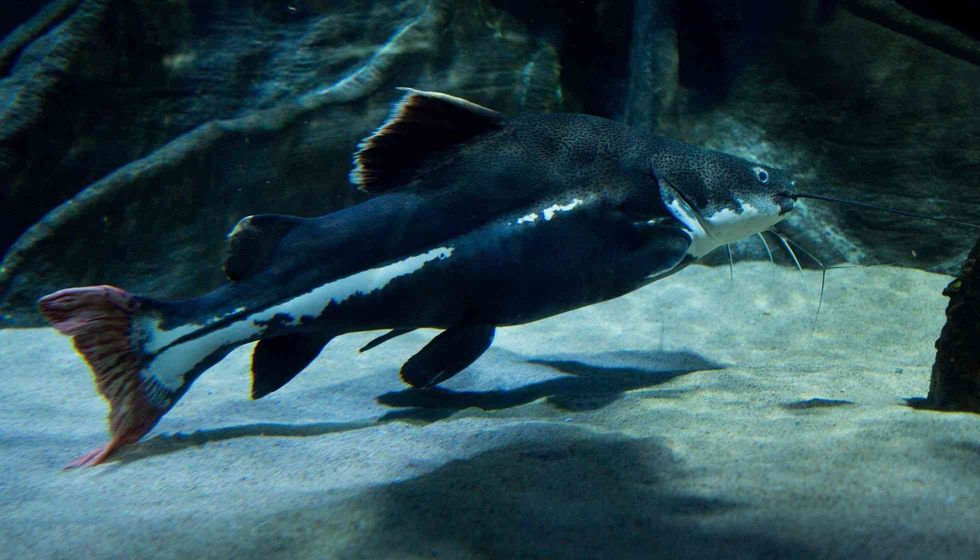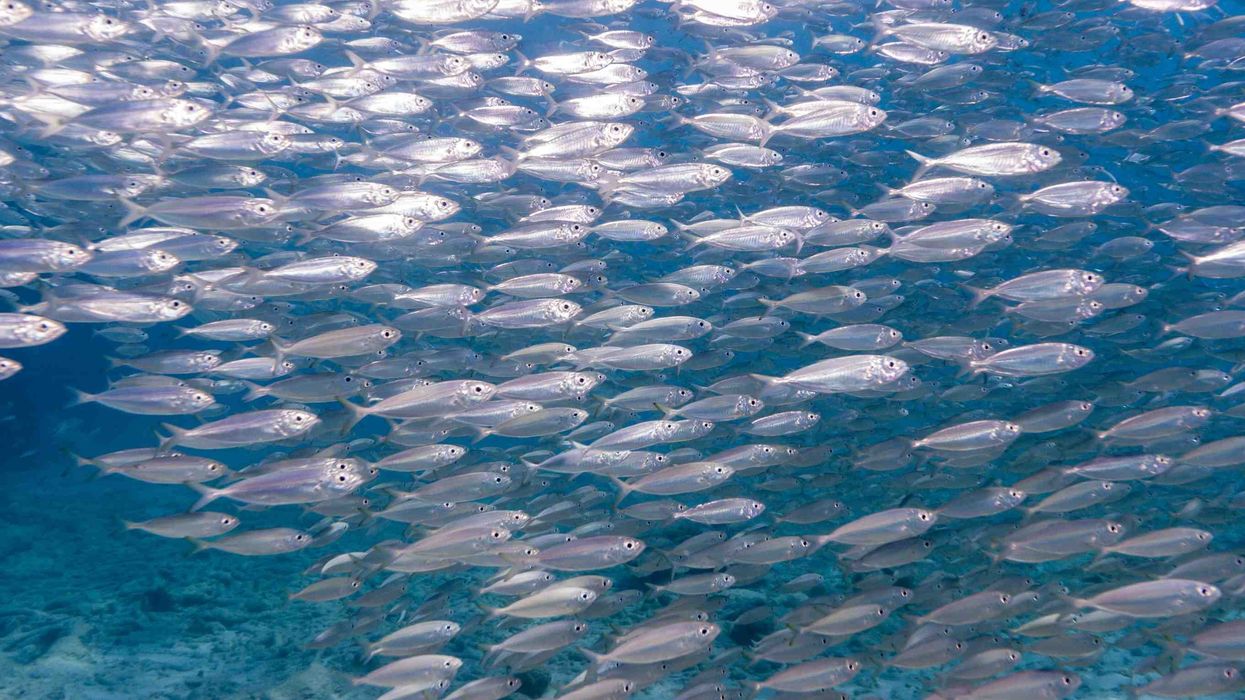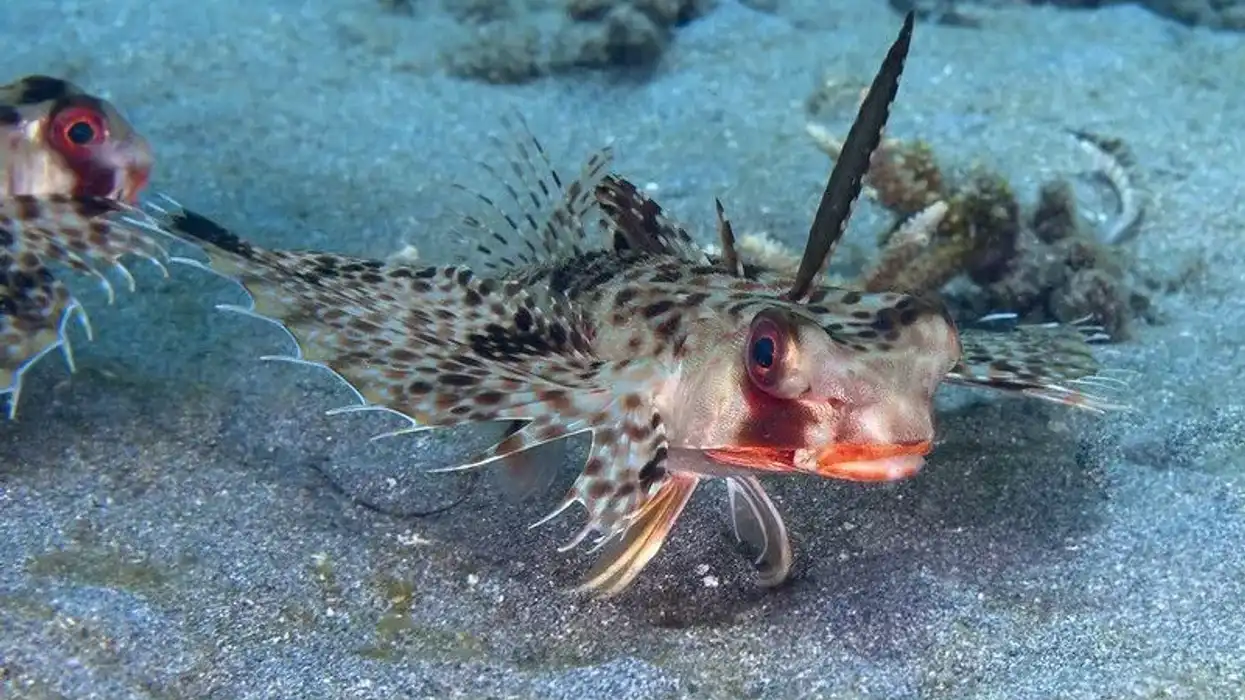Pangasius is a genus of Asian shark catfish. 22 species of fish fall under this genus and they are mostly native to Southeast Asia.
They are mainly found in Vietnam, Laos, Myanmar, and Thailand. They are taken from these places for farming and aquaculture purposes, and then they are sold in fish markets worldwide.
You will find fillets of this fish in European markets.
This species of fish is even kept as a pet, but they need large aquariums to survive as they can grow to be 9.8 ft (3 m) in length and 40-55 lb (18-25 kg) in weight. They are predatory but despite that, this fish is still a peaceful kind.
A large number of pangasius are being farmed currently and their number is declining in the wild. There have been steps put in place to prevent this such as a collection of fry for farming and the trading of this species being restricted.
Read on to know more about a pangasius fish, and if you like this article then check out tang fish and tetra.
Pangasius Interesting Facts
What type of animal is pangasius?
Pangasius is a kind of shark catfish. It is in the genus of many large catfish.
What class of animal does pangasius belong to?
Pangasius belongs to the class Actinopterygii of animals.
How many pangasius are there in the world?
The exact number of the population of pangasius fish or basa fish is not known. There are 22 different species of fish under this genus, and while the population of most species among them is stable, there are many among this species whose information is not still not known to us.
There is no specific information on the estimated population of all the species.
Where does Pangasius live?
Pangasius or basa are native to Southeast Asia. Most pangasius fish live in the lower parts of the Mekong River in Vietnam. During the breeding season, this Asian fish swims upstream to Cambodia.
Once the eggs hatch and they grow up to be a fry, they swim downstream to Vietnam again. They are mainly found in the waters of Thailand, Laos, Myanmar, and Vietnam. This species of fish has been introduced to many other rivers in different countries for aquaculture, like the Iridescent shark (Pangasius hypophthalmus).
What is a pangasius' habitat?
Pangasius is an Asian freshwater catfish that mainly lives in tropical climates. They prefer large water bodies such as rivers and prefer water bodies with enough depth. Iridescent sharks live in water bodies that have a 6.5-7.5 pH and 2.0-29.0 dGH of water hardness.
Who does Pangasius live with?
Pangasius fish do not school and are solitary. The fry can show schooling nature, but as they grow up, they become more solitary.
This species of fish is important for aquaculture and they are also kept as pets in many parts of the world alongside other species of fish. This fish can live with other species as long as they are bigger than pangasius. If they are kept with smaller fish, chances are pangasius will eat the smaller species.
How long does Pangasius live?
Pangasius live for about 20 years in the wild.
How do they reproduce?
Pangasius reaches sexual maturity at the age of about three to three and a half years. The breeding season for this fish occurs between February to October.
During this time, this fish leaves their usual habitat downstream of the Mekong River and swims upstream away from Vietnam. Usually, this fish only spawns in the wild, however, if someone does decide to breed them, they would need a large water body. Unfortunately, not much is known about the process of reproduction.
Females can lay up to 80,000 eggs and the growth rate is pretty high. The eggs hatch and grow into fry within about a day and then they swim downstream again.
What is their conservation status?
There are 22 species of pangasius and according to the International Union for Conservation of Nature Red List, most of these species like the pangasius catfish (Pangasius pangasius), the black-spotted catfish (Pangasius larnaudii), and the Mekong catfish (Pangasius mekongensis) the conservation status is Least Concern.
For many such as the Pangasius lithostoma, Pangasius kinabatanganensis, or Pangasius myanmar, not enough data is available or not enough research has been done, and so their status is Data Deficient.
Some pangasius fish like the Giant Pangasius (Pangasius sanitwongsei) fall under the category of Critically Endangered, the Pangasius rheophilus falls under the category of Near Threatened, and the Pa Souay Hang Leuang (Pangasius krempfi) falls under the Vulnerable category.
Pangasius Fun Facts
What does a pangasius fish look like?
The appearance of all the species varies a little, but mainly they have a general appearance that applies to all of them. They have scaleless bodies built in such a way that it helps them to swim with little to no difficulties.
They have long twin beards and wide mouths. Their body color ranges from silver to dark gray. They have an extra respiratory organ and they can also breathe through their skin, which indicates that they can live in waters where the oxygen level is a little lower.
How cute are they?
Catfish can seem cute to many people and some even keep them as pets. Their bearded mouths and scaleless bodies have a charm to them and they also play a pretty significant role in aquaculture. Whether they seem cute or not to people, the importance of these fish cannot be denied.
How do they communicate?
Pangasius fish communicate through sight, sound, and a sense of vibration. All fish can hear sounds, and they mostly rely on their vibrations in the water to sense and get an idea of their surroundings.
How big is Pangasius?
Pangasius fish are large and their growth rate is also pretty rapid. A full-sized adult pangasius fish can grow to be an astounding 9.8 ft (3 m) in length.
A pangasius fish is also called shark catfish. Generally, a thresher shark can grow to be almost 20 ft (6.1 m) in length, which is almost twice the size of a pangasius fish.
How fast can Pangasius swim?
The exact speed at which pangasius fish swim is unknown. From the little information that we have, we know that they swim at a moderate pace and they are active swimmers both in the wild and in an aquarium. They swim around the middle region for the most part.
How much does Pangasius weigh?
The weight of a pangasius fish can be up to 40 lb (18 kg). The weight of some fish in captivity is a whopping 55 lb (25 kg).
What are the male and female names of the species?
There are no specific names for males and females of this species.
What would you call a baby pangasius?
When the eggs hatch, a baby pangasius fish is called a 'larva'. When a baby grows, it is called a 'fry'.
What do they eat?
Pangasius or basa fish are omnivorous in nature. In the wild, they feed on about anything they can. Their food includes plant matter to live fish that are smaller in size than them.
These fish mainly eat more meat than vegetation but as they grow up they shift their diet more towards vegetation. If they are farmed for aquaculture purposes, they can be given live, flake, and any pellet food.
They should be given high-quality and well-balanced food to get more nutritional value out of them. You can feed them blood worms, brine shrimp, or live crickets. Sometimes they can also be given feeder fish too.
Are they dangerous?
Pangasius is a rather peaceful fish.
They don't show any aggressiveness towards fish of their species, but they are predatory fish and eat small fish. Other than that, they are important for aquaculture and there haven't been any reports of this fish showing any aggressive behavior towards humans.
However, this species of fish can be somewhat toxic for consumption sometimes if they are caught in the wild as the Mekong River has become quite polluted and ones being sold from farms may be full of chemicals due to veterinarian visits.
Would they make a good pet?
Pangasius fish or basa fish can make good pets as they a peaceful fish.
You can keep them together with a few of their species but don't keep them with other species of fish that are smaller in size. Even if young ones show schooling behavior, they will become solitary when they grow up and they grow up pretty quickly, so a big tank is needed from the very beginning.
The required minimum tank size is about 100 gal (454 l).
If the fish you have grows up to 3 ft (91 cm), you will need at least a 300 gal (1363 l) tank. The proper temperature should be 72-79 F (22.2-26.1 C), with a pH level of 6.5-7.5 and a hardness level of 2-20 dGH.
The movement of the water should be moderate and the lighting inside the aquarium should be low.
You need to change at least 20%-25% of the water once a week, and the fish are known to jump so there should be a light lid on the tank. They also have sensitive skin, so be aware of any injury or disease.
You need some expertise in handling this type of fish before you can keep them, but keeping them as pets certainly adds charm to your aquarium.
Did you know...
Pangasius catfish or the basa fish loses all of its teeth as it grows up.
The pangasius genus of fish includes many species of fish, but one species of fish among them that is the most important commercially and in terms of aquaculture is called the pangasius by many people. It is also known as Pangasius bocourti.
Iridescent sharks or Pangasius hypophthalmus are native to Thailand and this species has a few other names such as sutchi catfish, striped Pangasius, or Siamese shark. Its meat is sold by the name, swai.
Is pangasius fish healthy to eat?
Most pangasius fish that are sold to the market are products of aquaculture. Mostly, they are sold in fillets in the global fish market.
Each of the fillets is full of Omega 3 and protein, and low in terms of fat and cholesterol. There is a slight risk that the fillets of this fish contain toxic substances due to their native river being polluted, so they sometimes may be harmful to humans. Consumption at a moderate rate does not do any harm.
How to cook pangasius?
Pangasius or basa fish fillets can be cooked by baking, frying, or grilling.
Here at Kidadl, we have carefully created lots of interesting family-friendly animal facts for everyone to discover! Learn more about some other fish including Candiru or fluke fish.
You can even occupy yourself at home by drawing one on our Pangasius Fish coloring pages.










